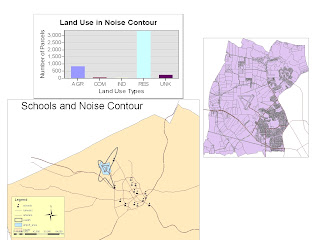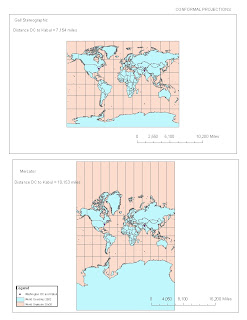99 Counties
2. Which county in Georgia contains the largest number of people, as of the year 2001? (2
pts)
Fulton County
3. How many cities, with populations greater than 15,000, are located within the State of
Washington? (2 pts)
39 Cities
4. How many miles long are all of the interstates that are crossed by the outline of Los
Angeles County? (2 pts)
3851.137043 Miles
5. Simplify the UrbanBoundaries feature class so that only the urban areas of Los Angeles
County are visible (Hint: you will use one of the overlay functions: clip, intersect, or
union). Include a screenshot of this new layer in your blog. How many acres of urban
area lie within Los Angeles County? (2 pts)
 1367445.890625 acres
1367445.890625 acres6. How many zip codes have their centroid in Los Angeles County? (2 pts)
522 Zip Codes
7. Create a layer displaying the provinces of Canada using the data provided to you in the
Canada dataset. Save this new layer under the Canada dataset using the name
Provinces. Include a screenshot of this new layer in your blog. (2 pts)

8. Which Native American Indian Reservations lie within 75 miles of the City of Thurso in
Quebec, Canada? (2 pts)
Doncaster Indian Reserve 17
Kitigan Zibi Indian Reserve
Kahnawake Indian Reserve 14
Kanesatake Indian Reserve 16
Akwesasne Indian Reserve 15










